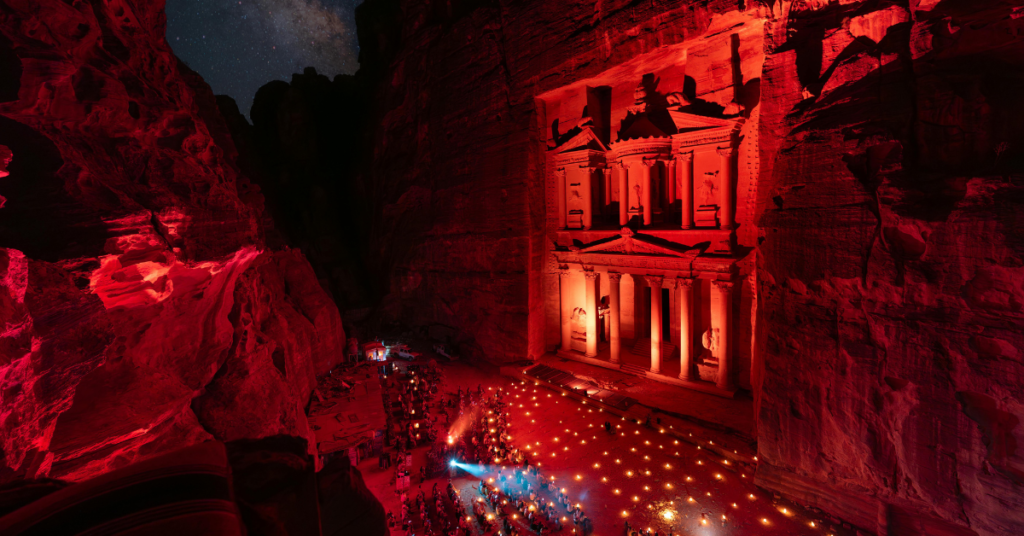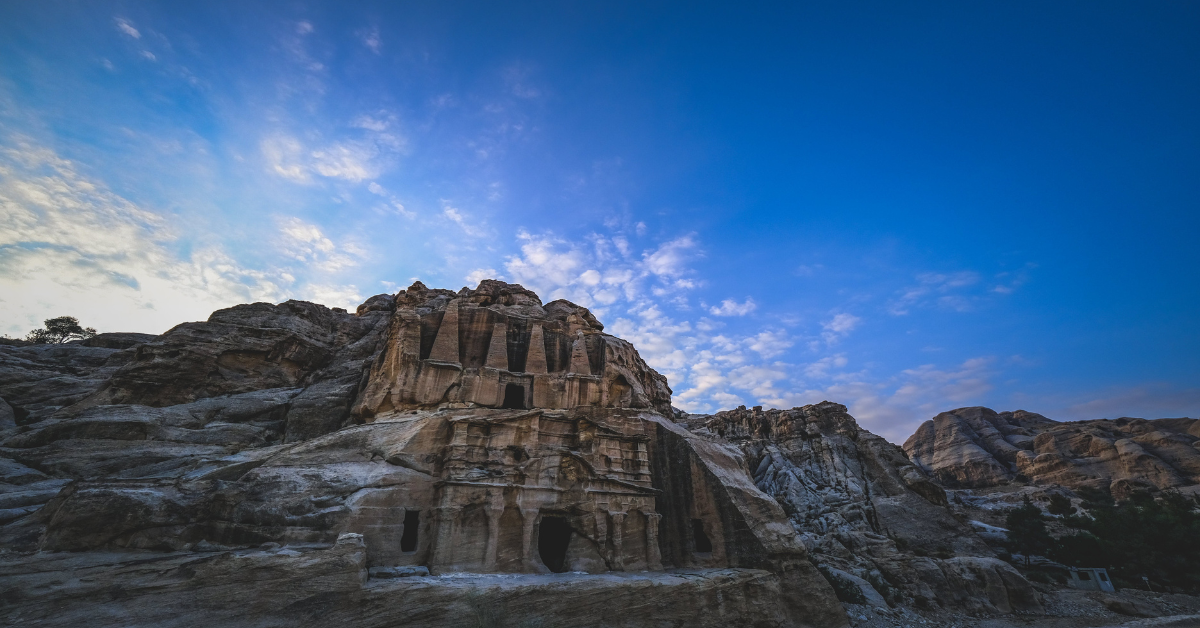Nestled in the desert of Jordan lies a hidden gem of ancient history Petra. This UNESCO World Heritage Site attracts travelers from around the world with its breathtaking rock cut architecture and rich historical significance. Join us on a journey as we delve into the wonders of Petra and unravel its mysteries.
A Glimpse into History

Petra, also known as the “Rose City”, was the capital of the Nabataean Kingdom dating back to around 400 B.C. This archaeological marvel served as a major trading hub connecting the East and West flourishing with vibrant cultural exchange and unique architectural marvels.
Key Highlights
- The famous Treasury (Al-Khazneh) with its intricate facade carved into the red rock.
- The Royal Tombs showcasing the grandeur of Nabatean burial traditions.
- The Roman Theater where ancient performances once entertained audiences.
The Lost City Revealed

While the ancient city of Petra was lost to the Western world for centuries, it was rediscovered by the Swiss explorer Johann Ludwig Burckhardt in 1812. Since then it has captivated the imagination of historians, archaeologists and adventurers alike.
Burckhardt’s Discovery
Discovery of Burckhardt seemed like finding a buried treasure in the wide sweep of historical research. In 1812, Swiss explorer Johann Ludwig Burckhardt disguised himself as an Arab tourist and invaded Petra, presenting the city’s ancient treasures to the Western world. His painstaking studies and daring voyage shed light on the forgotten Nabatean civilization, capturing imaginations and reigniting interest in the study of ancient cultures. Burckhardt’s daring trip not only revealed exquisite architecture of Petra but also cleared the door for more archaeological investigation, leaving an everlasting mark on exploration history and inspiring future generations of explorers and historians.
The Architectural Marvels

The most striking feature of Petra is its rock cut architecture, where entire structures were carved into the red sandstone cliffs. The ingenuity and craftsmanship of the Nabateans are evident in every intricate detail of the city’s monuments:
Notable Structures
- The Monastery (Ad-Deir) with its monumental facade and panoramic views.
- The High Place of Sacrifice offering a glimpse into ancient religious practices.
- The Colonnaded Street is lined with ancient shops and dwellings.
Modern Day Exploration

Today, Petra remains a popular destination for travelers seeking a glimpse into the past. From guided tours to independent hikes, visitors can immerse themselves in the history and beauty of this ancient city.
Tips for Travelers
- Wear comfortable shoes for exploring the rugged terrain.
- Visit early in the morning or late in the afternoon to avoid the crowds.
- Connect with local guides to uncover hidden gems and stories of Petra.
Conclusion
As we conclude our journey through the ancient ruins of Petra, we invite you to embark on your own adventure and experience the magic of this historical wonder. From the towering cliffs to the intricate carvings, Petra offers a glimpse into a bygone era that continues to captivate and inspire visitors to this day. Remember, the mysteries of Petra await those who dare to explore its timeless beauty.
“In every grain of sand lies a story waiting to be told in Petra, those stories come alive.”

Mohammad Dilshad Nadeem,a competent content writer for Gulf Info,specializes in interesting narrative about the Gulf. His expertise covers politics, society,trends and each article has unique insights. He attracts readers with his ability to tell compelling stories and offers a clear picture of the Gulf’s changing environment.

